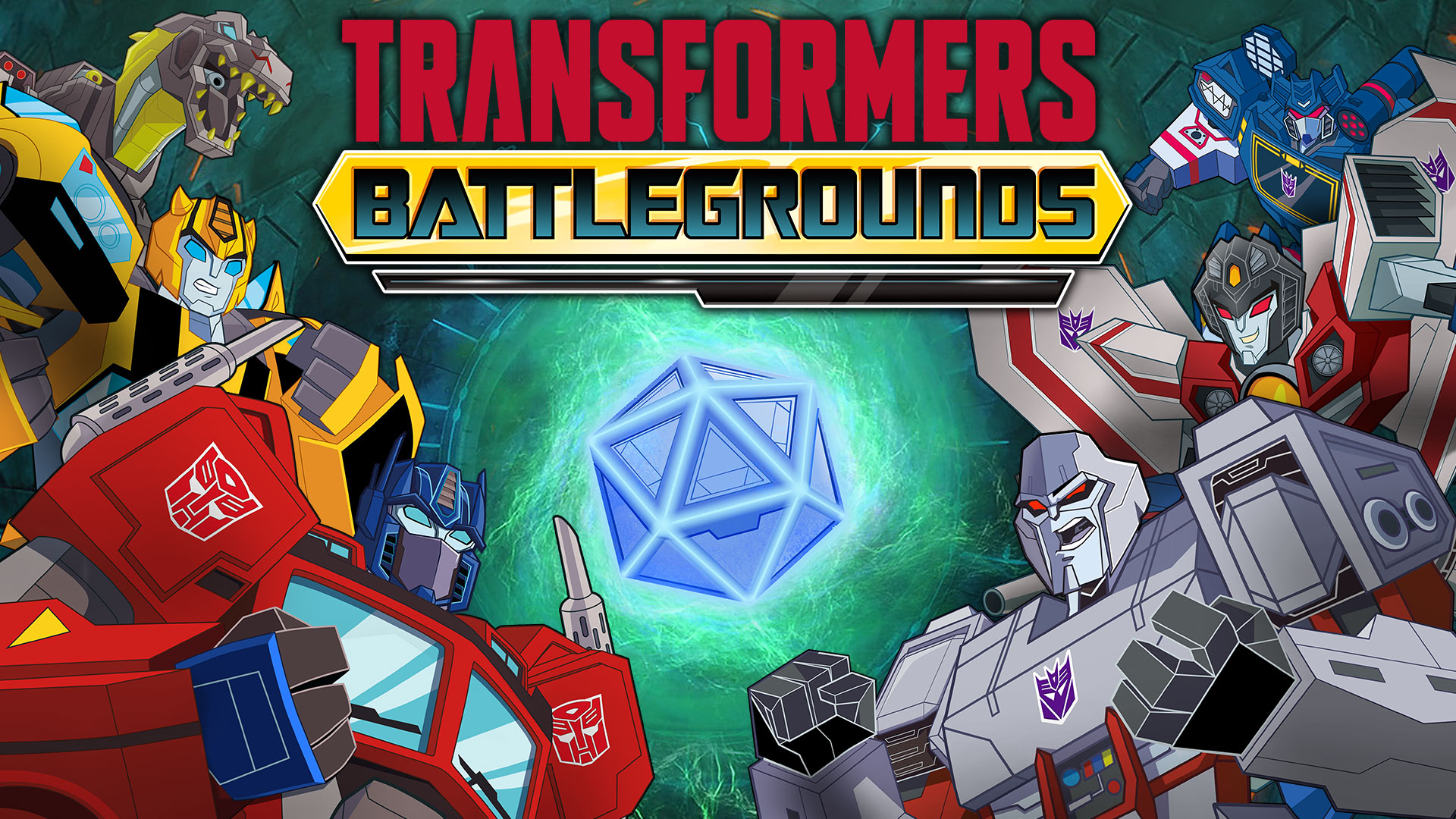Transformers: Battlegrounds
An IP That Has Changed Hands Several Times
When I think of Transformers, I think of giant robots clashing with rival giant robots as buildings, cars, and other miscellaneous environmental fixtures are all pulverized. Platinum Games captured what it felt like to be a giant robot with their game, Transformers: Devastation. It was a fast-paced action game that I recall you were able to turn your mind off and just destroy buildings and other robots alike. It was a thrill that I would recommend to this day.
Unfortunately, due to Activision’s deal with Hasbro ending, every game published by the company was delisted --- Devastation included. Good luck finding a Steam key for that game from someone who isn’t about to charge you an arm and a leg for it!
So, when I was tasked to do the review for Battlegrounds, I honestly did not know what to expect. Especially when I was told that it was an RTS game. Giant robots moving tactically in plain sight in public locations made little sense to me. I honestly found it funny. After taking my time with the game, however, it was an honest effort.
They tried to explain this with the plot the best way they could, so I’ll give it an A for effort. The story is your typical Transformers song-and-dance. The evil Decepticons wish to gather the power of the AllSpark for themselves. The good guy Autobots want to protect the AllSpark from the evil Decepticons. Optimus Prime is missing, so it’s up to Bumblebee and his allies to find Optimus, find the AllSpark, and save the galaxy.
The Plot Is Non-existent But It’s Hardly A Loss
The twist here is that as the Decepticons make their way to destroy Anytown, USA to claim the AllSpark, a stray human is saved by the flying tutorial automation known as Teletraan-X. I would call him an Autobot, but, of the Autobots that are featured in the game, he doesn’t ring any immediate bells sadly. The viewpoint of the game is shown through the player’s eyes in “first-person,” as Teletraan-X flies you across the map while you give orders to your Autobot companions.
It’s a cute way to explain why the Autobots are participating in guerilla warfare against the Decepticons while taking orders from a kid. It also gives the player a sense of immersion. I guess.
I’m putting myself in the perspective of a kid who is into the Transformers brand. The series has been going on long before I was even born. Currently, we are in the Cyberverse universe, long past the heyday of the “movie” generation. At least for now. Would a kid be in the slightest bit interested in a tactical strategy game involving robots that have the power to engage in epic battles in any other way? I’ll try my best to review this game keeping that in mind, as that is the core demographic for the game let’s face it.
Transformers, XCOM In Disguise
Developed by Coatsink, the developer is perhaps best known for Kingdom: Two Crowns, a 2D strategy indie game that has a bit of a cult following among its players. While not cut exactly from the same cloth, Battlegrounds plays like a simplified XCOM if one is to be blunt. However, assuming that a child’s first introduction to real-time strategy will more than likely not be XCOM, it plays to the core details of the RTS genre without bombarding the player by going in-depth. This makes the gameplay and experience streamlined and linear, more on that later, but it does its job the way it needs to for the target audience.
The colorful cartoon-like graphics aren’t exactly cel-shading yet charming enough in their low-budget way. The voice acting is what you would expect from a Transformers cartoon. Even down to its paper-thin plot as mentioned earlier. A child would want to play this for the cheap fun that they can have while playing the game. Micromanagement such as character loadout is as simple as selecting a primary attack, an ability, and an “Energon” attack, this game’s version of an “ultimate” attack. All of the intricacies such as weapon durability points required to use special attacks, and movement mechanics are all heavily simplified.
The ‘Real-Time Strategy’ Is Made Simple
Movement and actions share the same resource as you have three action points that refresh every turn, per Autobot. You can spend all three action points on movement or a powerful attack, splitting your points between movement and attacking. You can even move, attack, then move again from an advantageous point. There’s a cover system utilized that forces opposing units to adjust their position to attack a covered unit.
You can also utilize interactable environments, such as exploding cars, to deal more damage to opposing units. Destroyed rocks on the desert map cause a cloud of dust that impairs a unit’s vision. There are energy crates that increase a unit’s “Energon” meter as a unit stands in its zone. You can also shove crates towards units instead to damage them.
Utilizing the field to your advantage can mean the difference between thinning out the enemy’s numbers and causing them to surround you. The enemy units have access to the same amount of resources as you do. Unfortunately, on normal difficulty, the AI is too one-dimensional to take advantage of the environment.
There Is An Extreme Lack Of Variety Among Objectives
The game is split into four acts, with each act representing a specific zone. The first act takes place in the aforementioned city. The second takes place in a barren desert. The third continues from the desert into a mountainous region. The final act takes place in a futuristic city, away from Earth itself. Each zone had its unique charm to it, but there is nothing done to break away from the monotony. It didn’t matter if the city had buildings you could use for extended cover or if the vast desert required you to move accordingly. Every single zone had the same mission “variety.”
- Get from Point A to Point B, disregarding the enemy Decepticons as they spawn indefinitely.
- Defeat the boss and their minions, the latter of whom spawn in waves.
- Hold off a vantage point and survive for X amount of turns until a cutscene happens, prompting you further instruction.
That was it. Those were the rotation missions I’ve had to do for my two-hour playthrough of this game. On the later levels, the enemies set up strategic vantage points meant to hinder your progress. You are expected to use the surrounding area to think of another way through the enemy’s defense.
There Is A Large Margin For Error Not Seen In Other RTS Titles
Or you could just brute force your way through and take the damage. It didn’t matter. There was no penalization, no punishment, for not doing what the game expects you to do. If you played the way the game intended, then you’d often find yourself at a field disadvantage.
Thinking back on how this game was targeted towards kids, this isn’t teaching them the basis of Real-Time Strategy. RTS games often don’t give you the green light to rely on offense 100% of the time. There are traps, terrain differences, and other nuances that exist.
In this game, such a thing does not exist. Aside from the destructible environments which are few and far between, there’s nothing related to one zone that separates itself from any other zone. All units could move the same speed through the sandy desert as they would through the craggy rocks of the mountain.
The lack of variety is also felt through the decision of the units available. Starting off the game, you only have access to Bumblebee and Windblade, the two Scout class units. Eventually, you save fellow Autobot, Grimlock, the first Brawler class unit. In the next act, you are introduced to the two Support class units, Arcee and Wheeljack. Finally, you gain access to the head honcho, the final Brawler unit, Optimus Prime. By the end of Act 2, you’ll have access to every unit available. That’s two for each class, totaling six altogether.
Despite The Lack Of Variety, The Game Length Justifies It
For a game of its length, having access to only six units isn’t the most offensive thing. Surprisingly, each unit in each class plays differently enough from the other. Bumblebee can stun his targets while Windblade’s signature ability is to push units with her propellers. Arcee has pretty decent area-of-effect skills, acting as a combat medic, while Wheeljack is the more traditional roaming support. Grimlock wrecks havoc on everyone in the surrounding area and Optimus deals critical damage to single targets.
You’ll get the gist of how each class plays for the most part. Brawlers hit hard and can take hits but move slow. Scouts can move the farthest and disorient targets while being fragile. Supports are the only units that can heal other units but can also dish out damage to enemies. Having a balanced team can mean the difference between a challenge and a breeze.
Coupled with the different load-outs you can give each unit, spent with earned points from completing missions, and it’s a system that’s surprisingly in-depth. As “in-depth” as this game allows anyway. It’s a shame the rest of the game couldn’t reflect on this variety and freedom of choice.
Despite Its Promise, The Ending Falls Flat
I trudged on though, despite earlier musings. The following is a spoiler of the final section of the game, but, I’m sure no one minds.
The grand finale isn’t a giant showdown with Megatron for the fate of Cybertron as I was naive in hoping. Instead, the final showdown is an injured Optimus Prime who must inch close towards Megatron as he charges his super deadly laser beam. You advance every time he’s on cooldown. Eventually, you reach his position and the game ends with a final cutscene. That’s it. The entire game you fought Megatron and he was this super buffed unit that you had to simply “survive” against until story magic happened. Ironically, the game ends in, well, story magic.
Replayability is varied. Take the same “variety” of missions you were given for your campaign playthrough and slap them as various game modes. There’s your arcade mode. You have survival mode, capture the flag, capture the point, and a wave battle mode. There is co-op multiplayer, which is good to see, although it is local co-op only. Not that this game needs online co-op in my opinion.
At Least The Player Can Play As The Decepticons
Perhaps the most interesting game mode in Arcade was the option to play as the Decepticons themselves while fighting against the Autobots. You control four Decepticons with a pre-existing loadout versus two Autobots. I suppose this is poetic. Being placed in this situation many times during the campaign is rewarding when you’re the one pressuring the hapless Autobots instead of you being the Autobot. It’s a novelty mode and it’s interesting to see how each Decepticon plays, but it’s all smoke and mirrors. The thrill is fleeting.
The game was as anti-climatic as it was a drag from start to finish. It was a shame because the game did have some bright spots. If the game was allowed to break free from the chains of its linear captivity, it’d be a solid experience. Heck, it would have been a perfect gateway to teach your younger sibling or child a genre that is niche and heavy to get into. It does some of these things well, but, unfortunately, it runs out of gas too early for me to recommend it as is.
Transformers: Battlegrounds is available on the PC, PS4, Xbox One, and Switch.

